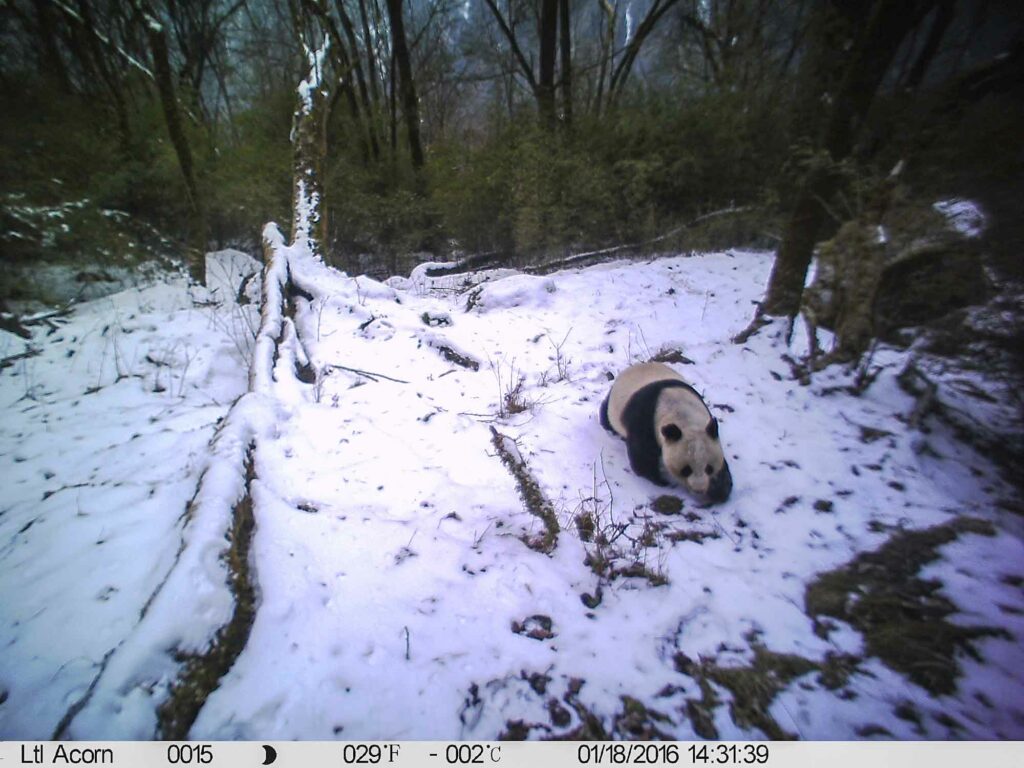Wild pandas living luxurious lifestyles in perfectly-created man-made panda-friendly landscapes are becoming too lazy for sex, putting the future of the species at risk.
Research by Michigan State University (MSU) published yesterday (20th September) found that a panda’s habitat is ideal when it is happy enough to thrive, but at the same time not so comfortable that it does not bother to move around and, more importantly, find a mate.
The idea of creating perfect habitats in the wild is in response to climate change and human activity, which often results in the destruction of the pandas’ natural habitats.
Landscaping is undertaken to tackle fears they will be left with insufficient resources and not be able to find new mates for reproduction.
However, the study led by Thomas Connor found that creating the ‘perfect’ habitat may actually be counterproductive in encouraging pandas to find new mates and breed.
According to the study, maximum gene flow actually occurred when the panda’s habitat was 80 per cent habitable with the rest being unsuitable for the species.
Connor said: “As opposed to the potential interpretation of our results that maximising the amount of habitat in a landscape can be bad for connectivity, I think that our research suggests a message of hope.”
He added: “We can effectively manage panda populations by conserving and restoring habitat to intermediate levels. In other words, we don’t have to create perfect habitat to keep protecting pandas.”
Connor explained that pandas are famous for being picky about their habitats, partly due to their reliance on bamboo and shyness that drives them from human disturbances, along with their tendency to like cooler temperatures and shallow slopes.
The study shows that it is not necessary to have 100 per cent of the area as a habitat to support pandas, and in fact, pandas would benefit from some unsuitable habitat across the landscape.

Jianguo ‘Jack’ Liu, the Rachel Carson Chair in Sustainability and a paper co-author, said: “This work provides hope to balance needs for ecological sustainability and human well-being.”
Carson added: “Our results show it is possible for both pandas and humans to thrive across coupled human and natural systems.”
The results suggest that when conservationists try to revive panda habitats that have been destroyed by human activity or natural disasters they should not necessarily aim to create the ‘perfect’ environment.
Connor believes that these findings could be even more relevant to other species considering pandas are some of the pickiest animals in the world due to their shyness and singular reliance on bamboo.
In 2016, the IUCN reclassified pandas from ‘endangered’ to ‘vulnerable’, stating that the decade-long effort to save the panda has resulted in some positive progress.
The study was published under the title ‘Complex effects of habitat amount and fragmentation on functional connectivity and inbreeding in a giant panda population’ in the journal Conservation Biology on 20th September.

To find out more about the author, editor or agency that supplied this story – please click below.
Story By: Peter Barker, Sub-Editor: James King, Agency: Newsflash
The Ananova page is created by and dedicated to professional, independent freelance journalists. It is a place for us to showcase our work. When our news is sold to our media partners, we will include the link here.




